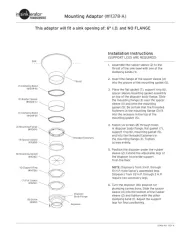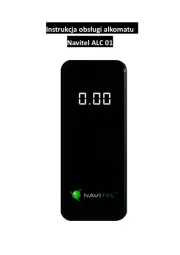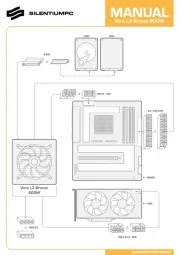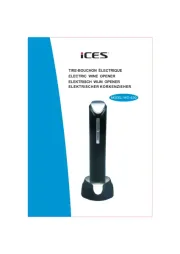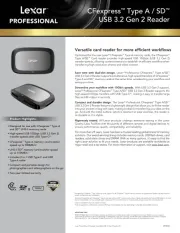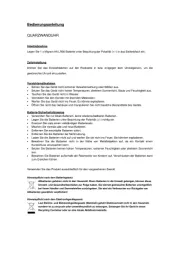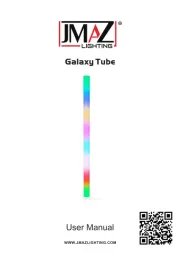
In Australia, removal of knockout plug does not apply. It is suggested
that the dishwasher units be connected to IPLEX/ COROMA dishwasher
spigot for maximum efciency.
Wastewater from a dishwasher can be plumbed into the disposer through
the inlet access on the upper part of the disposer. There is a plug on the
inside of the inlet tube on all models. Once removed, the knockout plug
cannot be replaced.
REMOVE KNOCKOUT PLUG
1. Lay disposer on its side and insert slotted screwdriver into dishwasher inlet
so tip rests on outer edge of knockout plug.
2. Tap end of screwdriver handle with hammer until molded plug breaks
loose. (See Figure 6.1)
3. Remove loose knockout plug from inside disposer. (See Figure 6.2)
MOUNTING ASSEMBLY
1a. Strainer Basket and Plug
w/ Cover (Evolution Models
250 & 150, Model E75)
1b. Strainer Basket and Plug
(Evolution Models 100 & 200,
Model BW5)
1c. Stainless Steel Stopper
(Model 66, BW4)
2. Sink Flange
3. Rubber Gaskets (2)
4. Fiber Gasket (optional)
5. Backup Flange
6. Mounting Ring
DISCHARGE ASSEMBLY #1
(Evolution Models,
Model BW5)
15. Hose Clamp
16. Elbow Discharge Tube
(38 mm diameter)
17. Straight Discharge Tube
(optional)
DISCHARGE ASSEMBLY #2
(Models 66, 56, 46, BW5, BW4,
BW3, BW2, E75)
17. Straight Discharge
Tube (optional)
18. Bolts (2) 13 mm 1/4-20 UNC
19. Rubber Gasket
20. Metal Flange
21. Elbow Discharge Tube
(38 mm diameter)
DISPOSER
9. Sound Bafe
(Evolution Models, Models
66, 56, BW5, BW4, BW3, E75)
10. Mounting Gasket
11. Lower Mounting Ring
12. Dishwasher Inlet
13. Discharge Outlet
14. Wrenchette
DISCHARGE TUBE INSTALLATION
(Evolution Models and Model BW5)
Place discharge tube (2 or 3) into Anti-Vibration Tailpipe Mount
™. Secure with
spring type hose clamp (1). (See Figure 7.1)
DISCHARGE TUBE INSTALLATION
(MODELS 66, 56, 46, BW4, BW3, BW2, E75)
1. Place metal ange (5) over discharge tube (7 or 8). Insert rubber gasket (4) with
gasket lip facing the metal ange into discharge tube. (See Figure 7.2)
2. Secure metal ange and discharge tube to disposer with two 13 mm bolts 6).
www.insinkerator.com
©2020 InSinkErator, a business unit of
Emerson Electric Co. All Rights Reserved.
11
10
12
13
14
18
19
20
21
15
16
9
17
22
23
1c
1b
2
3
4
5
6
7
8
1a
31.8 cm 16.6 cm 6.5 cm 20.0 cm 13.1 cm
30.8 cm 6.5 cm16.6 cm 13.1 cm
33.0 cm 6.4 cm 23.4 cm18.5 cm 16.8 cm
31.1 cm 17.1 cm 6.4 cm 22.2 cm 16.8 cm
31.1 cm 17.1 cm 6.4 cm 22.2 cm 16.8 cm
(Evolution) 200-3B, 250-3
(Evolution) 100-3B, -11B, 150-3
Model 66-3, -10, E75-3
30.8 cm 6.5 cm16.6 cm 19.4 cm 13.1 cm
Model 56-3, -10, -11
BW4 -10
BW5 -10
BW3 -10
BW2 -10
Model 46-3, -10 18.9 cm
31.8 cm 16.6 cm 6.5 cm 20.0 cm 13.1 cm
30.8 cm 6.5 cm16.6 cm 13.1 cm
30.8 cm 6.5 cm16.6 cm 19.4 cm 13.1 cm
18.9 cm
Food waste disposers can provide an environmentally responsible alternative to transporting food waste to landlls. And they can help reduce greenhouse gas
emissions. At capable wastewater treatment plants, food waste can be recycled to produce renewable energy. Additionally, capable wastewater treatment plants
can process food waste into fertilizer. (Check the plant in your area).
Read through the entire installation manual before installing the disposer. Determine which of the tools, materials, and accessories you will need before
you begin. Make sure you have all necessary disposer parts before installing the disposer.
NOTE: The Evolution models and Model BW5 grind much ner than any other disposer. For this reason you may notice that it takes a little longer to grind some
food waste. Due to the Evolution 200/250 model’s microprocessor, users will experience a fractional second delay when starting on all Evolution 200/250 models.
This is completely normal.
NOTE: In Australia, all plumbing and electrical work must be completed by a qualied tradesperson. This product may require approval of the relevant regulator
and/or the sewerage system operator. Disposer must be installed to AS/NZS 3500.2 standard requirements.
NOTE: Make sure that the installation of this appliance is allowed by the authorities.
TOOLS & MATERIALS YOU WILL NEED:
Slotted Screwdriver, Adjustable Pliers, Safety Glasses
TOOLS, MATERIALS, AND ACCESSORIES YOU MAY NEED:
Phillips Screwdriver, Drain Auger, 9.5 mm Electrical Clamp, 38 mm Drain Trap, 33 mm Hole Drill, Hammer, Hacksaw, Water Hose Clamp, Pipe Wrench, Copper Earth
Wire, Dishwasher Drain Connection Kit, Electrical On/Off Switch, Drain Tube Extension
1. Disposer height.
2. Distance from bottom of sink bowl to centerline of discharge outlet. (Add
12 mm when stainless steel sink is used.)
3. Distance from centerline of the discharge outlet to end of discharge tube.
4. Disposer width.
5. Distance from disposer vertical centerline to centerline of trap connection.
DISCONNECT SINK DRAIN
1. Loosen nuts (1) at top of trap (4) with pipe wrench. Remove trap.
(See Figure 2.1)
2. Loosen nut (2) at top of extension pipe. Remove extension pipe.
3. Remove nut (3) at base of sink ange.
4. Push strainer up through sink hole and remove it. (See Figure 2.2)
5. Clean sink ange area of any putty or other debris.
The sink hole may have to be enlarged to accept the disposer NOTE:
sink ange. Sink hole enlargement tools are available from your
InSinkErator dealer.
CLEAN SINK DRAIN
Failure to clean sink waste pipe line may result in waste pipe blockage.
With drain auger, clear away all hardened waste material in horizontal drain
line running from drain trap to main pipe.
When installing in new construction, cleaning the sink waste pipe line is
not necessary.
IF REPLACING AN EXISTING DISPOSER,
CONTINUE WITH INSTRUCTION 3.
IF THIS IS A FIRST TIME INSTALLATION,
SKIP AHEAD TO INSTRUCTION 4.
1. Turn mounting assembly over (see Figure 4.1) and loosen three mounting
screws (1) until you can access snap ring (2).
2. Use screwdriver to pry snap ring off of sink ange. Mounting assembly can
now be disassembled.
Reference Figure 5.1.
1. Place one of two rubber gaskets (2) under sink ange (1). Ensure sink hole
area is clear of debris and place sink ange/gasket into sink hole. You may
wish to place a weighted object in the sink to hold the sink ange in place.
(Place a towel under object to prevent scratching.)
2. Working from under the sink, slip second rubber gasket (2), ber gasket
(optional) (3) and metal backup ange (4) (at side up) over the sink ange.
Holding second rubber gasket, ber gasket (optional) and metal backup
ange in place, slip mounting ring (5) over sink ange so it seats against
backup ange.
3. With the rubber gasket, ber gasket (optional), backup ange, and
mounting ring tight against sink bottom, slide snap ring (7) onto sink
ange until it pops into groove on ange.
4. Tighten three mounting screws (6) up to sink until mounting assembly is
seated tightly and evenly against sink.
IF YOU ARE NOT CONNECTING A DISHWASHER
TO DISPOSER, SKIP AHEAD TO INSTRUCTION 7.
FOOD WASTE DISPOSER INSTALLATION AND USE MANUAL
FOOD WASTE DISPOSER INSTALLATION AND USE MANUAL
CHECK INSTALLATION DIMENSIONS
1
DISCONNECT AND CLEAN SINK DRAIN
2
DISASSEMBLE NEW DISPOSER
MOUNTING ASSEMBLY
4
PARTS LIST (May vary depending on model)
14
3 6
2
5
78174 Rev E
7.2
EVOLUTION MODELS, BW5
66, 56, 46, BW4, BW3, BW2, E75
7.1
5
6
6
5
6
78
ATTACH DISCHARGE TUBE TO WASTE DRAIN PIPE
7
7
Warning indicates a potentially hazardous situation which, if not avoided,
could result in death or serious injury.
Caution indicates a hazardous situation which, if not avoided,
could result in minor or moderate injury.
Notice is used to address practices not related to personal injury.
PERSONAL INJURY
Wearing safety glasses is recommended during the installation of the
food waste disposer.
PROPERTY DAMAGE
• All Evolution Models and Model BW5 must be connected to the supplied
tailpipe with the supplied spring type hose clamp (See Figure 7.1). In
Australia it is required to use the supplied straight discharge tube with
supplied spring type hose clamp. (See Figure 7.2) Failure to use the
supplied tubes and spring type hose clamp will void the guarantee and
possibly cause premature failure of the Anti-Vibration Tailpipe Mount
™.
• Do not use plumber’s putty on any other disposer connection. Do not
use thread sealants or pipe dope. These may harm disposer and cause
property damage.
• Regularly inspect disposer and plumbing ttings for water leaks,
as water leaks can cause property damage. Manufacturer cannot
be held responsible for property damage as a result of water leaks.
• To properly drain and prevent standing water in the disposer when
utilizing a straight pipe discharge tube, the tube connection opposite
the disposer outlet must be lower – not higher – than the disposer outlet.
NOTICE
NOTICE
PERSONAL INJURY
To avoid personal injury, do not position your head or body under
disposer; the unit could fall during installation.
ELECTRICAL SHOCK
• To avoid electrical shock, disconnect power before removing any existing
disposer. Turn off electrical power at fuse box or circuit breaker or if
equipped unplug disposer electrical power plug from wall outlet.
• Improper connection of equipment earth (grounded) conductor can
result in electric shock.
1. If your disposer is equipped with an electric plug and cord connection,
unplug power plug from electrical wall outlet.
If your disposer is not equipped with an electrical plug and cord
connection, contact an electrician to disconnect the old disposer plus
install an earth (grounded) electrical wall outlet for the new disposer
connection that must be compliant to all local electrical codes.
2. Disconnect drain trap from disposer waste discharge tube with
adjustable pliers (see Figure 3.1). Also disconnect dishwasher drain
connection, if applicable.
3. Support disposer with one hand and insert end of wrenchette or
screwdriver into right side of one mounting lug on lower mounting ring
(see Figure 3.2). Lift disposer slightly and remove from mounting by
pushing or pulling wrenchette or screwdriver to left (disposer may be
heavy; provide support).
4. Loosen three mounting screws, pry snap ring off with screwdriver,
and remove old mounting assembly (see Figure 3.3). Some mounting
assembly removal requires additional tools.
5. Push old sink ange up through sink hole (see Figure 3.4).
REMOVE EXISTING DISPOSER
3
6REMOVAL OF KNOCKOUT PLUG
FOR DISHWASHER CONNECTION
5ATTACH UPPER MOUNTING ASSEMBLY TO SINK
In Australia, dishwasher attachment and over flow connection does not
apply. It is suggested that the dishwasher units be connected to IPLEX / COROMA
dishwasher spigot for maximum efciency.
If you have a sink overow, it should be connected to the overow inlet on
the tailpipe (see Figure 10.1).
To connect the overow, remove the plug in the tailpipe by unscrewing the overow
connector cap (see Figure 10.2).
FOR NEW ZEALAND ONLY Connect the hose from the dishwasher to the dis-
poser inlet using a dishwasher drain connection kit with a hose clamp
(not provided).
NOTE: The straight discharge tube for use in Australia does not have an overow
connection tube.
DISHWASHER ATTACHMENT
AND OVERFLOW CONNECTION
8
This specication label contains important information the owner will need to
know in the event service is required. Place the portion of the specication label
removed in Step 8.1 somewhere easily visible to the user.
IF YOU ARE NOT CONNECTING A DISHWASHER
TO DISPOSER, SKIP AHEAD TO INSTRUCTION 11.
ATTACH SPECIFICATION LABEL
9
10
8.3
8.2
8.1
8.4
MODEL X X – XX
S/N X XXXX XXXX X
PUS H RED BUTTO N
TO RE SE T
CONNECT DISPOSER TO MOUNTING ASSEMBLY
8
Clear any objects from inside the disposer grind chamber before mounting
the disposer to the sink.
1. This product must be installed so that the red motor reset button, power
supply cord plug and earth ground receptacle are readily accessible.
Keep this space clear of all objects.
2. Prior to connecting disposer to mounting assembly, detach the perforated
portion of the specication label found at the base of the disposer, and set
aside for Instruction 9. (See Figure 8.1)
3. Lift disposer, insert top end (mounting gasket) into mounting assembly.
Position disposer with three mounting tabs (1) aligned in position to slide
over mounting tracks (2) (see Figure 8.2).
4. Turn lower mounting ring to right (with wrenchette or adjustable pliers) until
mounting tabs lock over ridges (3) on mounting ring tracks (see Figure 8.3).
Disposer will now hang by itself.
5. For Evolution Models, Models 66, BW5, BW4 and E75 Insert sound bafe
into sink opening, with at side upward. (See Figure 8.4)
6. Rotate disposer so that discharge tube is aligned with drain trap. (To
prevent leaks, do not pull or bend discharge tube to drain trap.) If discharge
tube is too short, you can purchase an extension from hardware store.
(Disposer must remain in vertical position to prevent vibration.)
7. Place nut, then ferrule on discharge tube and tighten on drain trap. (If you
have a double sink, use separate drain traps for both sides of sink.)
8. Ensure lower mounting ring is still securely locked over ridges on mounting
ange. (See Figure 8.3)
PERSONAL INJURY
To avoid personal injury, do not position your head or body under
disposer; the unit could fall during installation.
10
9
MODEL XX – XX
S/N XXXXXXXXXX
10.1
AIR SWITCH
(Evolution models,
Models 66, 56, BW5,
BW4, BW3, E75)
22. Air Switch Assembly
23. Tube
SAFETY SYMBOLS
PROPERTY DAMAGE
If the dishwasher connection is made without removing the plug,
the dishwasher may overow. (Connections must comply with local
plumbing codes.)
NOTICE
3.1
3.2
3.3
Read all safety messages before proceeding
!
!
Parex Industries Ltd.
5 Tolich Place, Henderson
Auckland, New Zealand 0610
Service and Sales Tel:
0800 200 510
Website: www.insinkerator.co.nz
InSinkErator
471 Mountain Highway
Bayswater Vic 3153, Australia
Sales Tel: 61 03 9720 5599
Service Tel: 1 300 136 205
www.insinkerator.com.au
InSinkErator
Emerson Electric Co.
4700 21st Street
Racine, WI 53406-5093
USA
Sales/Service Tel:
262-554-3652
www.insinkerator.com/worldmap.html
NOTICE
To properly drain and prevent standing water in the disposer, the waste
pipe entering the wall must be lower than the disposer discharge outlet.
Make sure all three mounting tabs are locked over ridges.
NOTICE
220-240V, 50-60Hz
7. Screws (3)
8. Snap Ring

